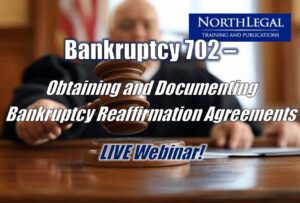 Guest Editorial
Guest Editorial
America has been called a “credit card society” and statistics tend to show this to be an accurate assessment. Two primary reasons given for this assessment are personal and financial irresponsibility. America and Americans are living on credit. If you can imagine such an amount (and I can’t) our current debt is 16 trillion dollars and our long term liabilities are over 70 trillion dollars. And we, as hard working American taxpayers are on the hook for it all!
I believe one of the reasons for financial irresponsibility is that young people as a whole are no longer being taught by their parents or the educational system the importance of saving and investing a portion of the money they receive over the long term that leads to financial independence.
With the current economic downturn and with somewhat dire predictions for the future it is my opinion that we need to get back to teaching our children, and ourselves, the basics and advantages of forming savings habits. My opinions have been reinforced from the conversations I have had with local school teachers, school board members, a professional (and very successful) investment counselor and other research I have done on this very important subject. The investment counselor told me he thinks this is a very simple and effective way to acquire a most important habit for the future.
From all this direct information and research I am currently “experimenting” with my 13 year old grandson on a simple little savings plan I dreamed up recently and which I call the 10% 30 Day Retirement Plan.
In concocting this plan the basic premise was to create a permanent habit for participants to think long term by taking short term steps….to “think for the moment while preparing for the future.” To help prove this theory to anyone interested I suggest that they take out their calculator and do the math on taking one penny and doubling it every day for 30 days. The results may surprise you. At the end of 30 days you would have accumulated a whopping $5,499,781.12! Now, we all know that very few people could meet such a challenge but the point is hopefully not lost.
The Plan is very simple:
From whatever income you receive, you put 10% of that income in a savings “lockbox” and at the end of each 30 day period you would assess your account using the three “R’s” of successful, long term savings.
Review your commitment to make sure you did, in fact “lockbox”10% of your income.
Renew your commitment every 30 days.
Refuse to remove any of your lockbox funds for any reason other than for investment purposes.
Sounds easy and simple doesn’t it? For most, the plan certainly seems simple but for many it won’t be easy to keep the commitment. Forming such long term habits especially when it comes to financial responsibility seems to be especially difficult because we don’t see the immediate results we would like to see. As human beings we tend to lean toward instantaneous gratification, thus the credit card mentality.
If you commit to the plan it will probably take a year to successfully acquire your 10% 30 day retirement habit. Once acquired, you will begin to realize the importance of preparing for your financial future and financial independence for yourself and your family.
And here is the “biggie”. If you have children you will be teaching them at an early age one of the most important lessons of life, the way to achieve financial independence. This, in itself is reason enough to start the plan.
Months ago, when I decided to experiment with this plan I began giving my 13 year old grandson $5 each week with his promise to lockbox just 10%. What he has now decided to do is to lockbox the entire $5 since he has no financial obligations at his age.
You may be thinking that $5 each week doesn’t amount to a great deal of money and of course you would be right. What you would be missing is that what is hugely important is the habit he is forming. Then you would begin to see that the most important aspect of the plan is that over that first year, it is the habit you have formed and not necessarily the amount of money you have accumulated over that first year.
Another “biggie” is that from this habit you will automatically begin to think about taking your plan to the investment stage which will accelerate the growth of your plan to provide you with financial independence for those “kick back” years and to give you the satisfaction of knowing that you have taught your children one of life’s most important lessons.
I am currently working to introduce this concept into our local elementary school system. The younger our children learn the importance of  forming such good financial “habits” the better off America will be. If you ever watched the Beverly Hillbillies you will remember Jethro Clampets math, “naught plus naught equals naught” and “naught” is not a good savings plan.
forming such good financial “habits” the better off America will be. If you ever watched the Beverly Hillbillies you will remember Jethro Clampets math, “naught plus naught equals naught” and “naught” is not a good savings plan.
Be safe,
Joe Taylor
Vice President
Director of Education
RISC











Facebook Comments